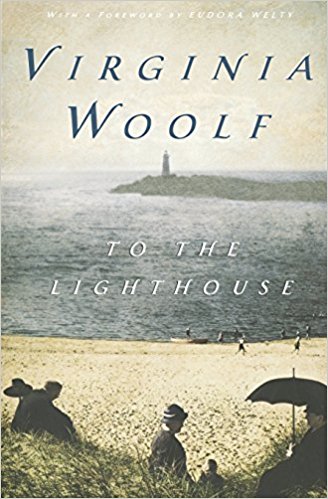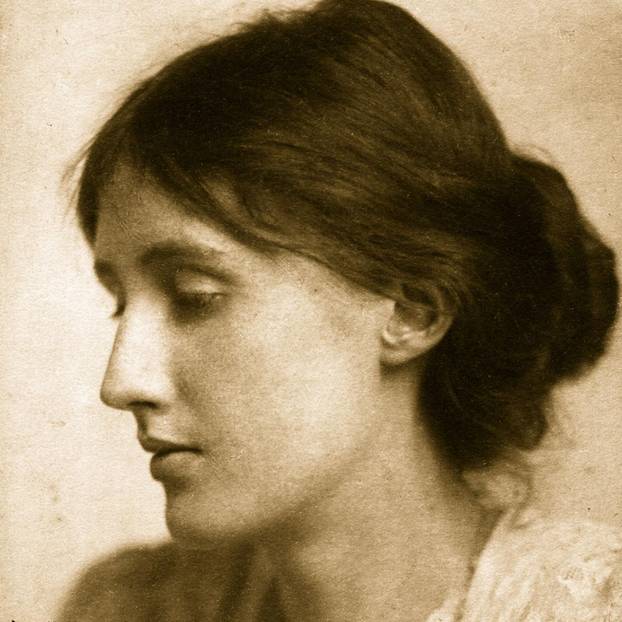To the Lighthouse Summary
7 min read ⌚
 According to many critics, Virginia Woolf’s best novel is “To the Lighthouse.”
According to many critics, Virginia Woolf’s best novel is “To the Lighthouse.”
And according to us, she is one of the ten best writers who have ever lived.
That’s right: we’re giving you no room for excuses not to read ahead.
Who Should Read “To the Lighthouse”? And Why?
Virginia Woolf is anything but a writer you can read on the beach or in the comfort of your bed. Maybe – if you’re reading her for the third time.
The first time asks for a lot of focus and at least some interest and knowledge about things such as stream of consciousness.
However, if you’ve ever read and enjoyed Faulkner’s “The Sound and the Fury” – and especially if you think that the third part of that book is the least interesting one – then “To the Lighthouse” may just be one of your favorite books.
Virginia Woolf Biography
Virginia Woolf was an English novelist, short story writer, essayist and literary critic. Many consider her the best female writer in the history of the English language, and describe her as one of the major modernists of the early 20th century, brushing shoulders with giants such as Joyce and Proust.
was an English novelist, short story writer, essayist and literary critic. Many consider her the best female writer in the history of the English language, and describe her as one of the major modernists of the early 20th century, brushing shoulders with giants such as Joyce and Proust.
Born into an educated, affluent household, Woolf was the daughter of Julia Stephen, one of the Pre-Raphaelite muses, and Leslie Stephen, a distinguished man of letters.
She was home-schooled, but her childhood came to an abrupt end when she was merely a teenager: her mother died, and she suffered a mental breakdown.
She will continue having such problems for the rest of her life (today’s psychiatrists diagnose her retroactively with bipolar disorder), which she will end by drowning herself in 1941.
In the meantime, she will leave one of the most lasting legacies of 20th-century literature and become the central figure of the feminist movements of the 1970s.
Plot
It’s a Virginia Woolf’s novel, so “Plot” is not exactly the right word for it.
The book has basically no dialogue, and most of the action happens in the second part which is by far the shortest one.
Woolf famously compared it in her notes to the horizontal line in the letter H, the vertical lines representing the first and the third part of “To the Lighthouse.”
Because that was Woolf for you: she had many things to say, but she didn’t want to say them in a way which will help people easily grasp them.
And she did that so successfully that reading a novel by Woolf is basically like reading a long lyrical poem.
“To the Lighthouse” is divided into three drastically asymmetrical parts.
Part One: The Window
Part One of “To the Lighthouse” takes up about half of the book and covers no more than seven hours.
It happens in the summer house of the Ramsays, where Mr. and Mrs. Ramsay and their eight children are entertaining a number of colleagues and friends.
The six-year-old James Ramsay, their youngest son, wants to go to the Lighthouse.
And his mother reassures him that they all will – the very next day when the weather will be fine and clear.
Mr. Ramsay thinks otherwise, adamantly claiming that the weather will not allow them to visit the Lighthouse – which is exactly what a six-year-old boy would want to hear!
Needless to add, you can cut through the tension of the scene with a knife.
Charles Tansley, a student of Mr. Ramsay with a working-class background and a very unpleasant personality, agrees with his teacher, making things even worse.
But that’s exactly what Charles does for most of the time, obsessing over his dissertation and insulting other people the way only Mr. Ramsay can.
One of the guests he most insults is Lily Briscoe, a young, uncertain painter with “Chinese eyes” who is deeply anxious over her work as well.
During the course of the novel, the work is actually a portrait of Mrs. Ramsay and James, which she starts but is unable to finish.
Why?
Because she constantly ponders over aesthetic problems she’s powerless to solve and people such as Charles Tansley and Mr. Ramsey.
The latter thinks that women are only good for housework and marriage. The former, basically his young, socially awkward doppelganger, goes a step further, saying that women can neither paint nor write.
Needless to add, Lily, just like Virginia Woolf herself, doesn’t share these opinions.
Which, naturally, makes her task even more daunting.
As we said above, most of the action in “To the Lighthouse” is nonexistent and happens merely in the minds of the characters.
So, throughout this chapter, we just skip from one thing to another, and we don’t even know that we’re skipping.
For example, at the moment, we’re in the mind of Mrs. Ramsay who’s reading a fairytale to James, all the while thinking how she must keep her head down for Lily Briscoe’s portrait.
And then she has a fleeting thought that Lily, with all her “unfeminine” thoughts and concerns, will have a problem finding a suitable partner.
However, Mrs. Ramsay likes Lily and thinks that William Bankes, a botanist and old friend of the Ramsays, should do.
And William and Lily are, in fact, out for a walk at the moment, talking about Mr. Ramsay, who has more important things to do, like thinking about his legacy and mortality.
Mrs. Ramsay is here to calm him, even though she has some worries herself, such as whether Paul Rayley has proposed to Minta Doyle – both guests of the Ramsays – and why they are not back from the beach with her children, Nancy and Andrew.
The first part of “To the Lighthouse” ends with a dinner party, which is the stuff of Mrs. Ramsay’s dreams! Everyone commends both her beauty and her culinary abilities, and Augustus Carmichael, a poet, even goes as far as asking for a second serving of soup!
How dare he!
Meanwhile, we find out that Paul has indeed proposed to Minta and that Minta has accepted the proposal.
All is great – thinks Mrs. Ramsay.
Too bad that you can’t freeze time and that as I’m thinking about it has already become part of the past.
Part Two: Time Passes
Virginia Woolf is a strange writer: she is capable of penning a hundred pages for few hours, but she compresses ten years in less than twenty.
So, in a very brief time, we learn many things that some other novelists – cough, Dickens, cough, Austen, cough, Tolstoy, cough, cough, cough – describe in the space of a volume, because, you know, wars and deaths are generally considered more important than painting a portrait.
Not to Virginia!
So, the First World War is raging, and three Ramsays have died.
Prue Ramsey has died during childbirth and Andrew Ramsey in a shell explosion in France. Mrs. Ramsey herself has left the world, leaving behind her a bereaved family who suddenly realizes that she had been its foundation all along.
Speaking of foundations – the summer house of the first part is not exactly in a great state at this moment.
Just like the Ramsays.
Just like the world itself.
To the Lighthouse Epilogue
Part Three: The Lighthouse
Back to the summer house, ten years later.
Mrs. Ramsay is missed, but life goes on. And Mr. Ramsay has an unfinished job to do: to take James – and her daughter Cam(illa) – to the Lighthouse they didn’t go to a decade ago.
The tables have turned, and now, as opposed to Mr. Ramsay, the children are the ones who don’t want to go. Eventually, however, they all set off, and Cam and James experience few moments of loving connection with their father.
Meanwhile, Lily is still painting (from memory) the portrait of Mrs. Ramsey and James she had started in the first part.
She is still friends with William – but she didn’t marry him or anyone else.
And just as the Ramsays are reaching the lighthouse, she finishes her portrait.
Unlike Mr. Ramsay, she realizes that she couldn’t care less about her legacy now that she has had her vision:
Quickly, as if she were recalled by something over there, she turned to her canvas. There it was — her picture. Yes, with all its greens and blues, its lines running up and across, its attempt at something. It would be hung in the attics, she thought; it would be destroyed. But what did that matter? she asked herself, taking up her brush again. She looked at the steps; they were empty; she looked at her canvas; it was blurred. With a sudden intensity, as if she saw it clear for a second, she drew a line there, in the center. It was done; it was finished. Yes, she thought, laying down her brush in extreme fatigue, I have had my vision.
Like this summary? We’d like to invite you to download our free 12 min app, for more amazing summaries and audiobooks.
“To the Lighthouse PDF Quotes”
What is the meaning of life? That was all- a simple question; one that tended to close in on one with years, the great revelation had never come. The great revelation perhaps never did come. Share on X He smiled the most exquisite smile, veiled by memory, tinged by dreams. Share on X To want and not to have, sent all up her body a hardness, a hollowness, a strain. And then to want and not to have- to want and want- how that wrung the heart, and wrung it again and again! Share on X She felt... how life, from being made up of little separate incidents which one lived one by one, became curled and whole like a wave which bore one up with it and threw one down with it, there, with a dash on the beach. Share on X About here, she thought, dabbling her fingers in the water, a ship had sunk, and she muttered, dreamily half asleep, how we perished, each alone. Share on XOur Critical Review
In the humble opinion of the 12min team, Virginia Woolf is one of the ten best writers in history. And you’ll never understand what we’re saying by reading her best-known novel, “Mrs. Dalloway,” alone.
And the bridge between that book and our personal favorite, “The Waves” is “To the Lighthouse,” possibly her most critically acclaimed book and the 15th best novel in the history of the English language, according to The Modern Library.
Emir is the Head of Marketing at 12min. In his spare time, he loves to meditate and play soccer.







